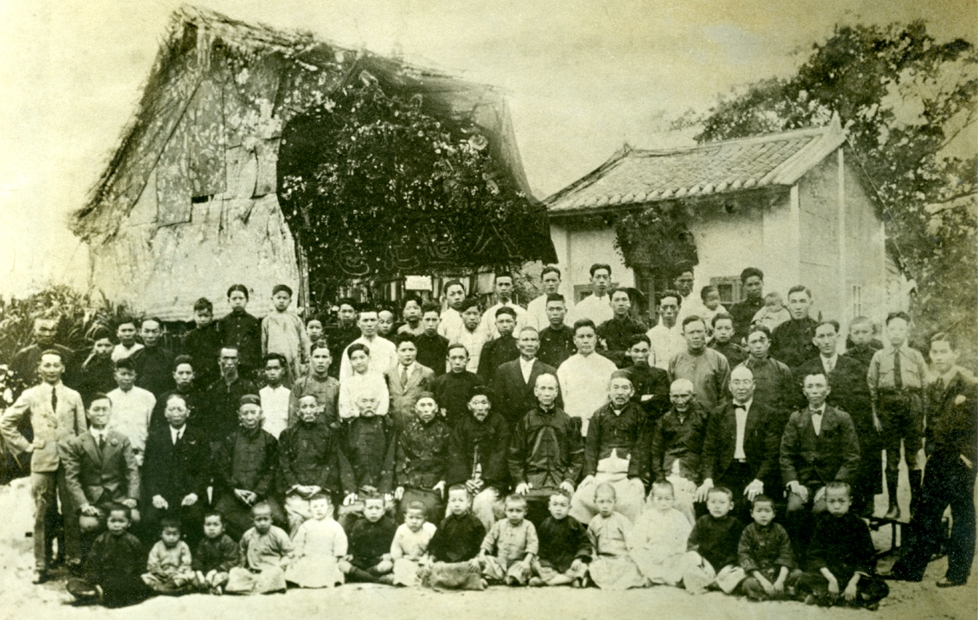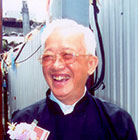
Nga Tsin Wai elder, Uncle Chan Shui Chuen
Chan Shui Chuen (second row, second from right) was a member of the Kowloon Tusk Lok Luen Shou Tuen club. This group photo was taken in 1930 outside Nga Tsin Wai Village during the club’s 9th anniversary -Provided by Lee Foo
Nga Tsin Wai elder, Uncle Chan Shui Chuen
Chan Shui Chuen (second row, second from right) was a member of the Kowloon Tusk Lok Luen Shou Tuen club. This group photo was taken in 1930 outside Nga Tsin Wai Village during the club’s 9th anniversary -Provided by Lee Foo
Village elder Uncle Chan Shui Chuen sitting in front of the gatehouse and telling stories about the past
Before the war, the Chans moved to Hang Hau. Chan Shui Chuen’s household was the only ones left in Nga Tsin Wai. Uncle Shui Chuen (Chan Shui Chuen) was older than Lee Foo’s generation and knew a bit of English. He often represented Nga Tsin Wai to talk with outside parties. He spent the rest of his life in Nga Tsin Wai with his daughter. Before he passed away, he got a coffin ready at home. After his 60th birthday, Uncle Shui Chuen lived inside the village leisurely. He liked to spend his days relaxing in his cane chair in Mau Chin. When Lee Foo was small, he always got close to Uncle Shui Chuen to listen to old stories about Nga Tsin Wai. The Sam Sing Tso used to live around Hau Wong Temple. They were small in numbers, and often got “da ming fo” (“robbed”, as known before the war). Later, they built a village in Nga Tsin Wai, fortified with blockhouses on the four corners and a drawbridge at the front gate. To prevent the Red-turban robbers (remnants of Cheung Po Tsai’s pirate mob) from entering the village to rob, the villages took their pigs and cows back behind the village walls every evening at 6-7pm, and lifted up the drawbridge until the next morning.


 BACK
BACK  CLOSE
CLOSE 